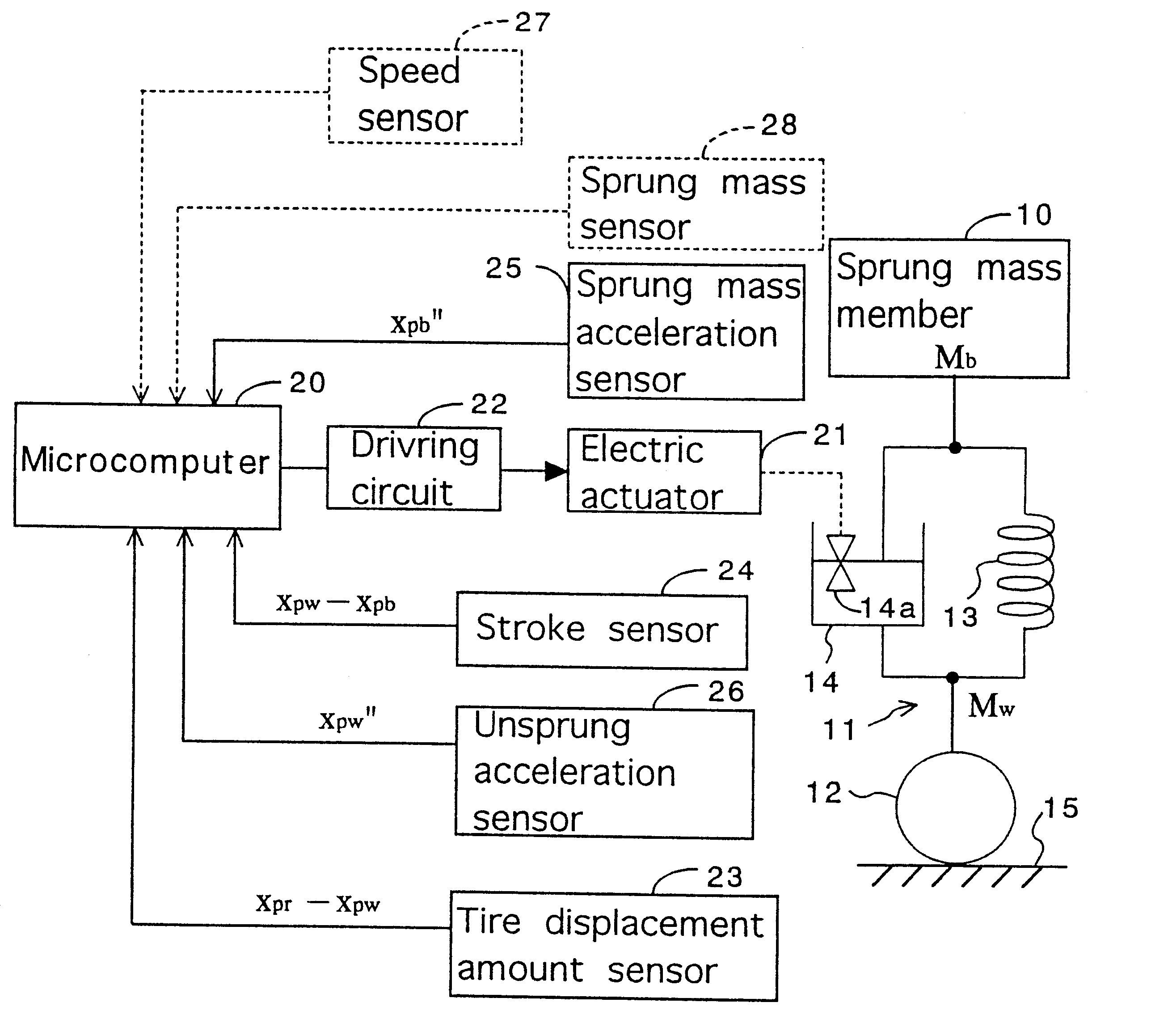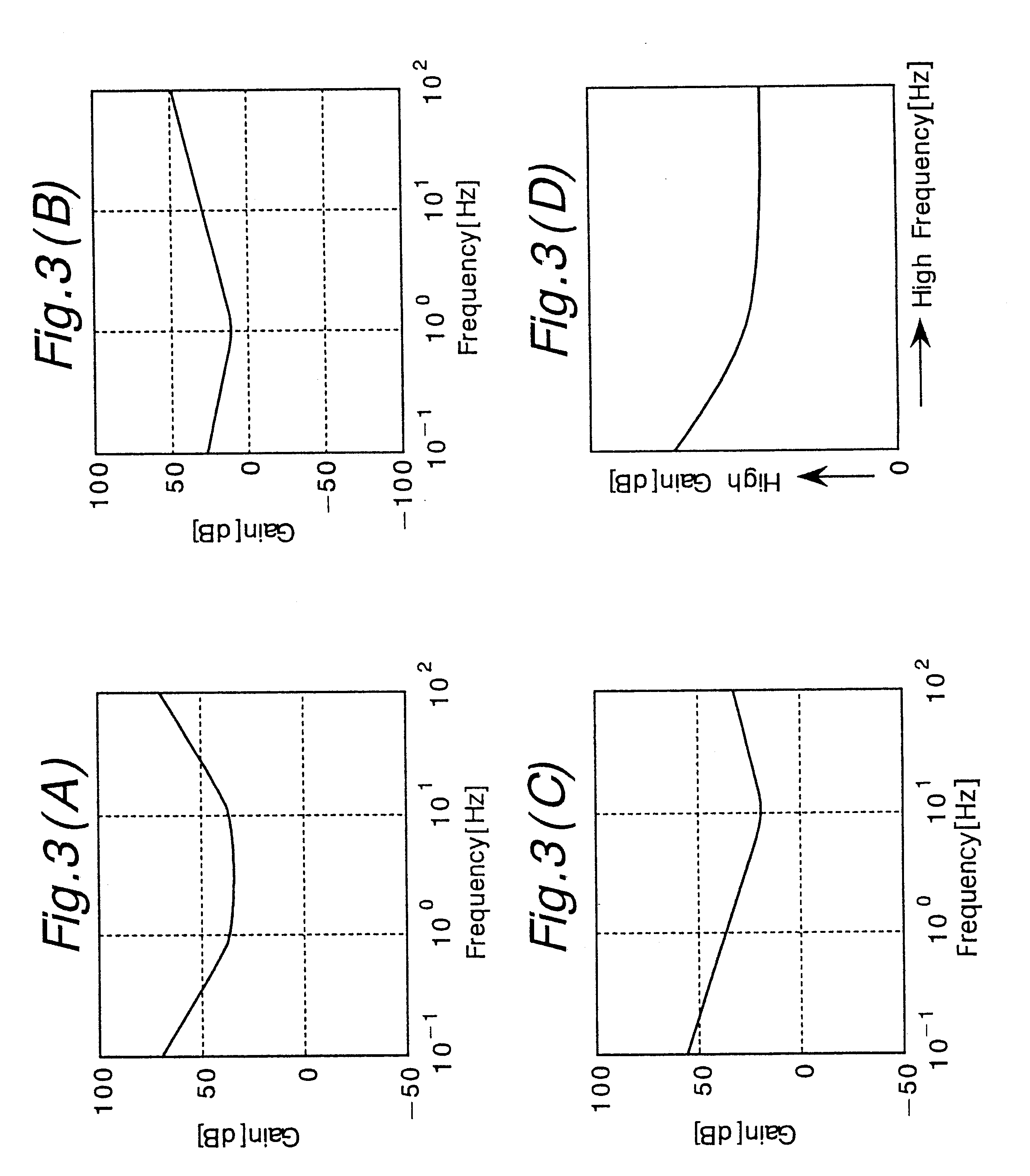Control system for resilient support mechanism such as vehicle suspension mechanism
a technology of resilient support mechanism and control system, which is applied in the direction of shock absorbers, instruments, cycle equipment, etc., can solve the problems of incongruity in control of the suspension mechanism, the control specification (a norm condition) given at the design stage may not be theoretically satisfied, and the design of the control system becomes very complicated
- Summary
- Abstract
- Description
- Claims
- Application Information
AI Technical Summary
Benefits of technology
Problems solved by technology
Method used
Image
Examples
second embodiment
c.
c1. Design of a Nonlinear H.sub..infin. Output Feedback Control System:
For design of a nonlinear H.sub..infin. output feedback control system, an observer is estimated which includes a portion of the state amount x.sub.p (the tire displacement x.sub.pr -x.sub.pw, relative displacement amount x.sub.pw -x.sub.pb, unsprung mass velocity x.sub.pw ' and sprung mass acceleration x.sub.pb "). In this case, a generalized plant of the output feedback control system is estimated as shown in FIG. 9, wherein the frequency weight is added to the evaluation output z.sub.p and the control input u. In the generalized plant, the evaluation output z.sub.p is multiplied by a nonlinear weight function a.sub.1 (x, x ) after multiplied by the frequency weight W.sub.s (s), while the control input u is multiplied by a nonlinear weight function a.sub.2 (x, x ) after multiplied by the frequency weight W.sub.u (s). Each characteristic of the nonlinear weight functions a.sub.1 (x, x ), a.sub.2 (x, x ) is rep...
third embodiment
d.
d1. Design of a Nonlinear H.sub..infin. Control System of the Kalman Filter Base:
An output feedback system with a Kalman filter used in an observer is designed in a condition where the bilinear factors B.sub.p2 (x.sub.p), D.sub.p2 (x.sub.p) are known. In this embodiment, the same reference characters as those in the second embodiment represent the same factors as those in the second embodiment, and the coefficients aid variables related to a plant are suffixed with "p". The state space of the suspension mechanism is expressed by the following equations (148) and (149).
x.sub.p '=A.sub.p x.sub.p +B.sub.p1 w.sub.1 +B.sub.p2 (x.sub.p)u (148)
y.sub.p =C.sub.p x.sub.p +D.sub.p1 w.sub.2 +D.sub.p2 (x.sub.p)u (149)
In the case that D.sub.p1 is defined as d.sub.p1 =I, the Kalman filter in the case of t.fwdarw..infin. is represented by the following equation.
x.sub.o '=A.sub.p x.sub.o +B.sub.p2 u+K(C.sub.p x.sub.o +D.sub.p2 (x.sub.p)u-y) (150)
Provided that, x.sub.o, x.sub.o ' each are an estima...
PUM
 Login to View More
Login to View More Abstract
Description
Claims
Application Information
 Login to View More
Login to View More - R&D
- Intellectual Property
- Life Sciences
- Materials
- Tech Scout
- Unparalleled Data Quality
- Higher Quality Content
- 60% Fewer Hallucinations
Browse by: Latest US Patents, China's latest patents, Technical Efficacy Thesaurus, Application Domain, Technology Topic, Popular Technical Reports.
© 2025 PatSnap. All rights reserved.Legal|Privacy policy|Modern Slavery Act Transparency Statement|Sitemap|About US| Contact US: help@patsnap.com



